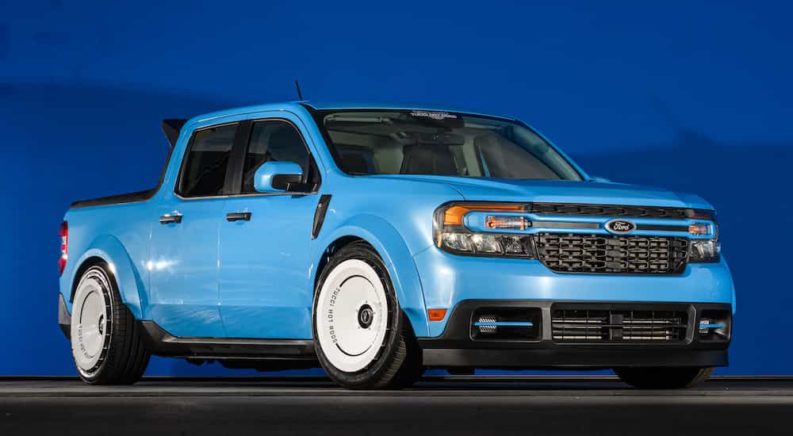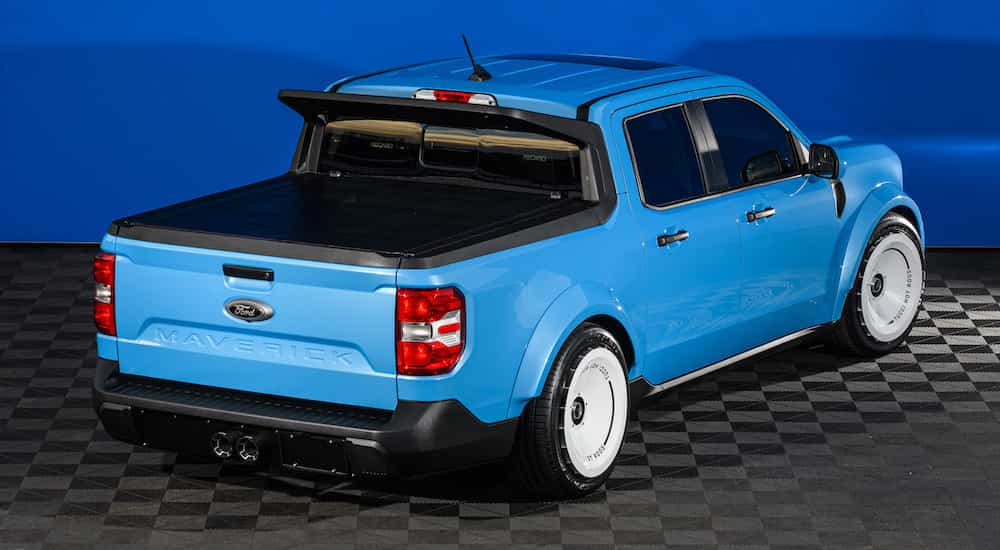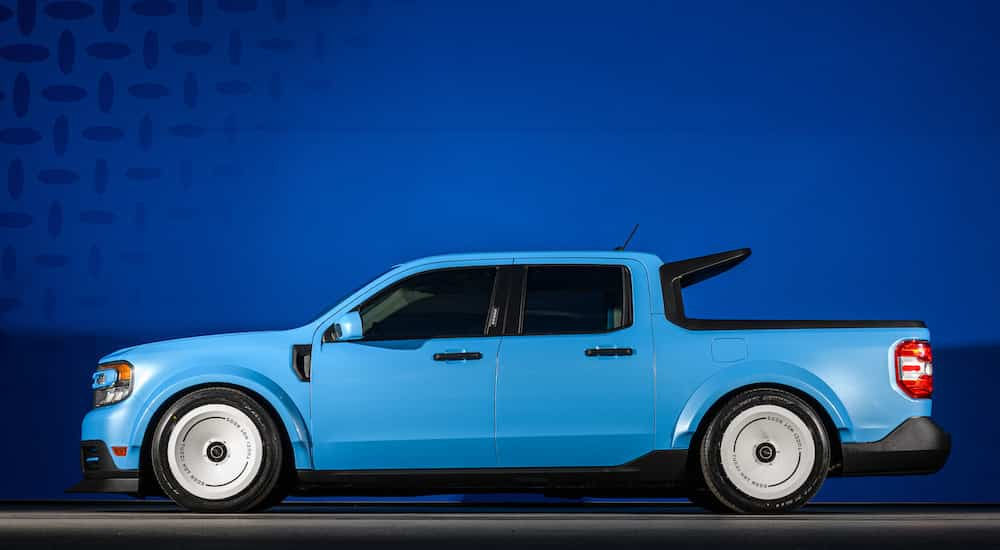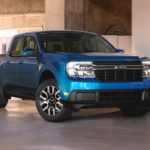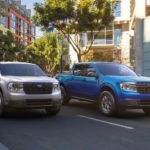The options to customize and create a truck that fits you are endless. Tailoring a new vehicle to meet your lifestyle is more popular than ever. No company knows this more than Ford. Look at their new 2022 Ford Maverick, a truck that has been touted as being “for people who didn’t know they wanted a truck”—and they’re right. The new Maverick is exciting and inspiring to drive, with vibrant colors, plenty of power, and fun extras that make it stand out from the pack of the common compact truck.
Ford knows what their customers want, especially their younger customers. They want a truck that expresses their personality and fits into their lifestyle. Whether it’s hauling materials for a work project or having a fun weekend tailgating and relaxing at the beach, they want a pickup that can keep up with them.
However, customizing a vehicle is nothing new. Whole cultures have cropped up around refitting a car to suit a certain lifestyle, a passion, or even just one’s own aesthetic sense. People have been doing it for as long as cars have been on the road. One such movement, inspired mainly by the So-Cal hot rod scene of the 1950s/1960s, really took off, creating an artistic movement that is still going strong today—known as Kustom Kulture.
Disassembled, chopped, welded, souped-up, and put back together, each vehicle is the embodiment of its creator’s passion. Whether you’re putting in a custom order through Ford for a brand new vehicle, or buying an old shell to build upon, nothing is better than being able to look over a crowded parking lot and instantly recognize your Cyber Orange Maverick Ford, your pinstriped vintage ride, or your electric-lacquered low and slow truck—standing out in the sea of the humdrum beige vehicles.
Hot and Fast
For many custom vehicle enthusiasts, it’s not just a hobby but a lifestyle. Tailoring a vehicle to fit a specific vision is the passion of car enthusiasts and artists the world over. George Barris laid claim to the original “Kustom” title with his business, Barris Kustom Industries. You’ve probably seen some of his work in pop culture, contributing to some of the most iconic vehicles—from Batman’s Batmobile to The Munsters’ Koach and their hot rod, Drag-U-La. So it’s no surprise that the Kustom Kulture embodies not just the love of vintage vehicles but also nostalgic elements like rock n’ roll and drag racing (along with plenty of tattoos). And, while some might look at it as kitschy or lowbrow, others can’t get enough of a one-of-a-kind vehicle. Today, whole events all over the globe—from California to Finland—are dedicated to the style of customization. A coupe, roadster. motorcycle, or pick-up—nothing is off the table.
One of Kustom Kulture’s favorite brands to play with? Fords, of course.
Known today for its great custom options and wide variety in their lineup, it’s no wonder Ford is also one of the most popular brands when it comes to car alterations and Kustom Kulture. If you go to a Kustom car show, chances are you’ll see plenty of tripped out and souped-up Ford Model A’s—and even a few Model T’s, if you’re lucky. Often done up in bold metallics, vibrant flames, endless skulls, and plenty of pinstriping, the Ford Model A frame is a favorite among Kustom enthusiasts. Their resulting rides, ranging from hot rods to rat rods, are each as unique as their owner.
While Kustom Kulture is centered around car and motorcycle know-how, it has become a cultural movement that’s still going strong around the world. Mechanics, artists, and designers are just some of the few who are drawn to this lifestyle; many encompass the passion for making truly unique works of art that turn heads wherever they go.
Low and Slow
Lowrider culture began around the same time as Kustom Kulture in post-war America. Troops were coming home and many Americans were buying new vehicles in the resulting economic boom. Car sales were exploding, and racing vehicles became common hot-ticket items. It wasn’t long before various subcultures brought something unique to the new American experience, creating their own takes on the racing scene.
After all, while the “hot and fast” Kustom Kulture has a distinctly retro feel that many find appealing, it’s not the only scene out there. Prevalent in mostly urban centers—originating in Mexico, Texas, and Los Angeles as early as the 1940s—lowrider custom culture was created and popularized mainly by LA’s Chicano community.
Lowriding came about as a reaction to the homogeneous culture that was being embraced across America in the 1950s, which many Mexican Americans didn’t feel connected to at the time. They didn’t alter vehicles to enhance performance for racing, nor make trucks bigger for off-roading—as many did when drag racing and hot rodding were first taking over the car communities in the 1950s and 1960s. Instead, lowriders were being customized to ride low and slow to the ground.
Many of the earliest lowriders were done on Ford Model-T’s, often by Mexican-Americans who employed the mechanical training they learned during military service to create head-turning, truly unique artistic pieces. The customization of a car or truck into a lowrider makes it unmistakable, lowering the vehicle’s chassis so it appears to be sitting on the asphalt. The designs, paint jobs, and interior upholstery are painstakingly designed. And, when it’s all over, the vehicles are often given expressive names; take, for example, the famous lowrider, Gypsy Rose. This lowrider showed up by chance cruising a LA street, when a scene for the TV sitcom, Chico and the Man, was being filmed in the 1970s. Since then, lowriders have caught people’s attention, with the famous Gypsy Rose now safe and sound in the Petersen Automotive Museum in Los Angeles for all to view.
As the decades went on, lowriders had a resurgence of sorts in the late 1980s and early 1990s among African Americans, specifically highlighted in many west coast hip-hop and rap music videos. The colorful cars began to become props more than anything else. Eventually featured in videos, ads, and parades, there was no mistaking a lowrider when you saw it rolling down the street.
Customize It
Vehicle customization is clearly nothing new, but it certainly hasn’t lost its novelty! And, with more and more young people on the road, new drivers want a vehicle as unique as they are. Whether they’re choosing a custom color or adding on extra features that help enhance their next adventure, everyday people are leaning towards personalization.
Some of the biggest brands in the automotive industry have sat up and taken notice of the trend and are offering tons of additional options each year. Iconic names like Ford even have the option to create your Ford your way, allowing customers to customize new cars, trucks, or SUVs. For example, you can customize the FLEXBED in the 2022 Maverick, outfitting it with storage tools, bike racks, bed extenders, and a host of other features.
Whether creators want their vehicle to go faster, go harder, or just look cool, customizing vehicles to fit a lifestyle is a cultural and artistic movement that has a vibrant history—and it’s still going strong decades later, with new generations continuing to put their stamp on it.

